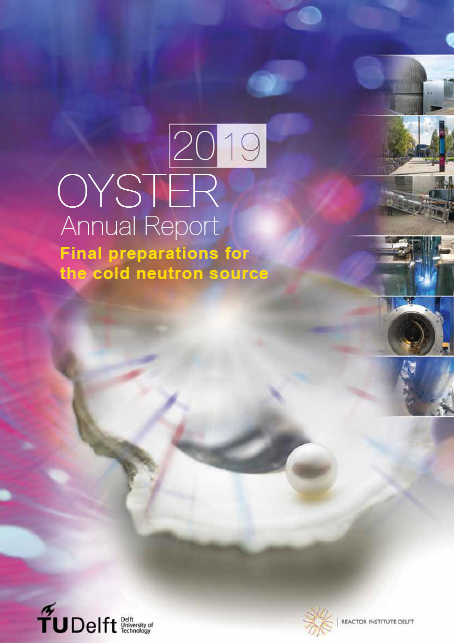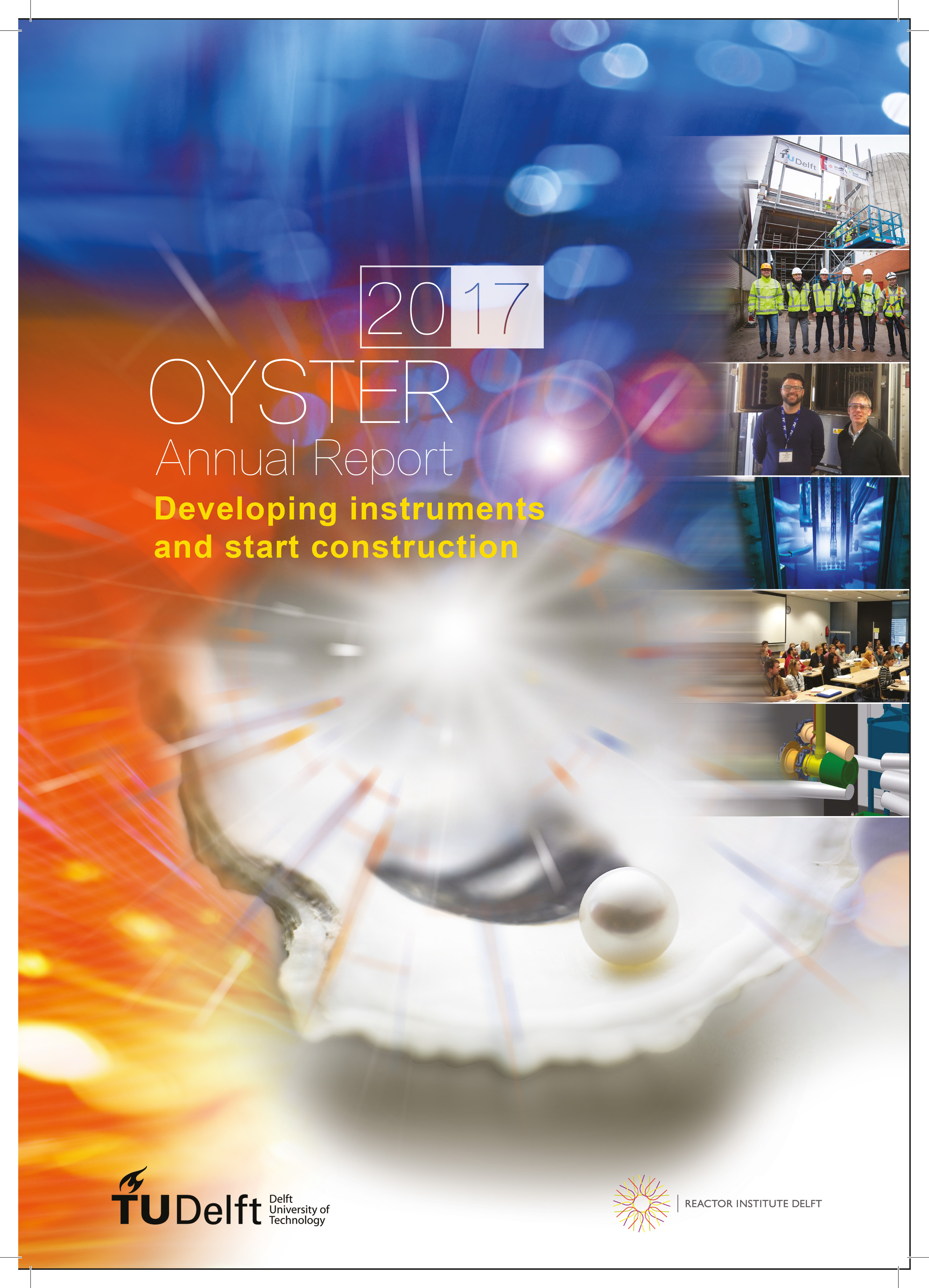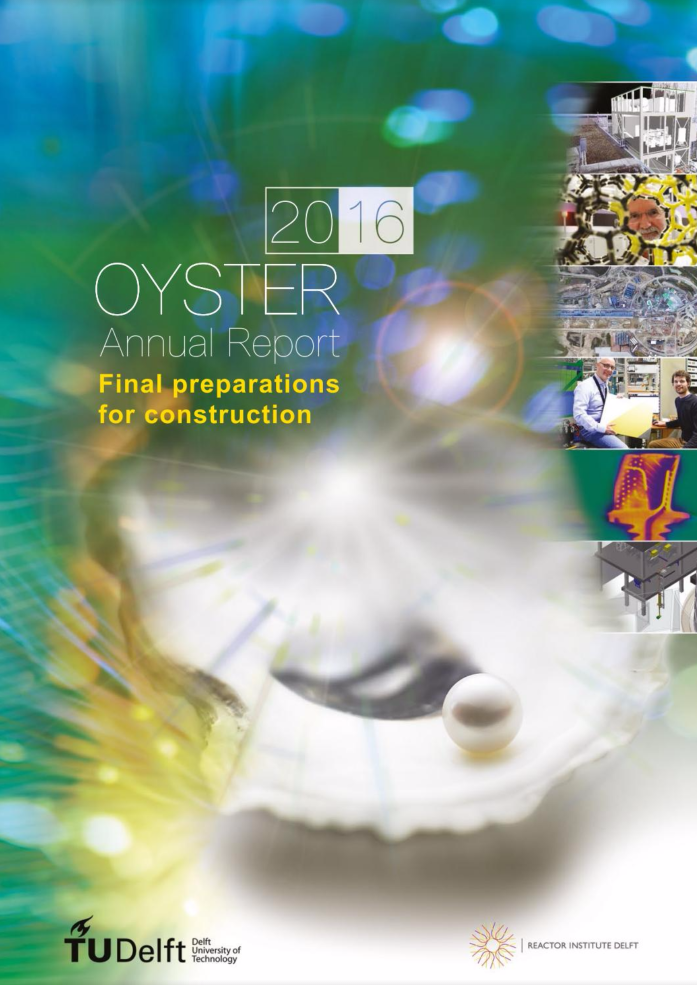Year reports
Year reports
Milestones
-
- Incorporation of the "In Pool Assembly" (IPA) is completed.
- Testing of all system together with the IPA is started.
- After the final commissioning phase is completed, the reactor is started up with the cold spring operating.
-
- Pre commissioning phase CNS facilities is completed.
- IPA is delivered after factory acceptance test, side acceptance test is conducted.
- Reactor is stopped in October to allow incorporation of In Pool Assembly (IPA).
- Operator retraining is started.
-
- The heart of the cold source the "In Pool Assemly" (IPA) is not yet available in the short term.
- Decision taken to recommission the reactor with thermal neutrons.
- A temporary extension tube is installed which will later be replaced by the IPA so that pre commissioning phase can start from CNS facilities without IPA .
- In December, the reactor will be started up with the extension tube after the commissioning phase is completed.
CNS Utility building
Changing the beam tubes for the cold neutron source
-
The CNS-Utility building is almost finished. The time-lapse video shows the construction from the first pile. The building, including equipment, will cool the cold source, which will be installed at the reactor core in Q1 2021. At an extremely low temperature of -250°C, it is easier for scientists to 'steer' these 'cold' neutrons to achieve even better research results. The potential for radiation-related scientific research and innovation in the fields of health, renewable energy and materials will be significantly improved and expanded. Its broad scope ranges from medical isotopes for diagnosis and treatment of cancer, batteries and solar cells to better steels.
OYSTER
With the OYSTER-programme (Optimized Yield - for Science, Technology & Education - of Radiation) RID can continue to meet fundamental research questions from the market and the scientific community in the field of health, sustainable energy and material research. Since the start of OYSTER, we have realised a number of unique, new instruments which are attracting a lot of attention. With the neutron diffractometer PEARL, scientists from the Netherlands and abroad can carry out energy research into, for example, hydrogen storage and new battery materials. In addition, the flexible irradiation facility for new production routes for medical isotopes has been taken into use.To the time-lapse video (2 min.) of the construction of the CNS-Utility building.
-
Over the course of 2017, the results of the programme, in terms of both scientific outcomes and the construction of new and upgraded instruments, have become ever more visible. All subcontractors for the Cold Neutron Source (CNS) and CNS-Utility building are known. In October 2017, the construction of the CNS-Utility building commenced.
In December 2017 our brand-new flexible irradiation facility ‘FlexBeFa’ was fully operational. The first liver cancer patient was treated with special radioactive microspheres produced in this facility. Thanks to the FlexBeFa, there is a longer window of time to get these medical isotopes to hospitals around the world where they are applied for curative purpose to patients.
-
The programme is at an important crossroads in time: 2016 saw the final preparatory work before the first construction activities started in October 2017. The OYSTER team concluded the contract definition and completed the negotiations between TU Delft and the (sub) contractors involved.
Also in 2016, the new Flexible Radiation Facility (FlexBefa) was designed and built to develop new production routes of radionuclides for medical use. And, of course, progress has been made in the development of new and the upgrade of existing instruments.
-
In 2015 the new beam instrument PEARL was taken into operation and generated a great deal of interest. PEARL’s new smart design means it is comparable with the best neutron powder diffractometers in the world, including those with neutron sources ten times as powerful. This new instrument improves energy material research. Researchers are able to conduct scientific research into energy storage materials for, for instance, wind and solar energy, and will be able to better investigate clever cooling materials, such as for magnetic cooling.
Other achievements for 2015 included the design of a flexible irradiation facility. The acquired additional funding meant that we were able to build and install a prototype in 2015.
The basic design of the cold neutron source (CNS) – to be built in our reactor – was worked out in further detail following the selection of the KHC consortium. The cold neutron source will allow us to increase the intensity of low-energy neutrons in order to improve the sensitivity of the beam instruments. The design for the CNS-Utility building was finalised and the associated cooling equipment requirements were determined as the basis for the next phase in the implementation of the OYSTER project. RID supported the consortium in the search for an experienced local supplier to realise the CNS-Utility building and associated equipment.
-
Our first OYSTER beam instrument, PEARL, was taken into operation. PEARL permits the unravelling of the crystal structure of (energy) materials, such as lithium batteries, hydrogen storage materials and magnetocaloric devices. The PEARL-team started the ‘hot commissioning phase’ of this neutron powder diffractometer in 2014. The experiments showed that they are building a competitive instrument with very promising results. It will enable scientists to perform experiments in Delft and not at other neutron sources such as in France or the UK.
We finalised the European tendering process for selecting the main contractor who will be responsible for building a cold neutron source in our reactor. Following an intensive and careful selection process with the pre-selected suppliers the contract agreement with consortium KHC; KAERI, Hyundai Engineering and Hyundai Engineering & Construction was signed on November 3 2014. His Majesty the King of the Netherlands and the President of the Republic of Korea attended the ceremony.
-
2013, the second year of OYSTER, was dedicated to setting the requirements and conditions for the amendments to be made to the reactor (including the Cold Neutron Source). Furthermore, the first new neutron diffraction instrument to be commissioned (PEARL) was being built and has been taken into its position inside the reactor hall.
RID started the European tendering for the reactor associated parts of OYSTER. At the same time there has been a continuous and fruitful dialogue with the Dutch Ministry of Economic Affairs on the implications of the implementation of the Dutch Safety Requirements that have to be in effect within the necessary licensing for the “after-OYSTER” operation of the RID reactor.
-
In 2012 we got the opportunity to further develop and expand the potential of the research reactor by the OYSTER program, of which the first ideas were born in 2005. OYSTER stands for “Optimized Yield -for Science, Technology and Education- of Radiation”, and is co-funded by the Dutch government, the TU Delft and a number of commercial parties. OYSTER aims to improve and expand the infrastructure around the reactor to better address current and future educational, scientific and societal questions. OYSTER was granted in January 2012 and spans a ten-year period for new research and education on reactor-based radioisotope production, neutron activation analysis, positron annihilation spectroscopy, neutron scattering and imaging. The innovative facilities and instruments that will be built as part of OYSTER will be accessible to Dutch scientists from academia and industry and will thus become useful tools in developing materials and technologies that are better and/or more sustainable than current ones.
More information
More information available in Dutch.




